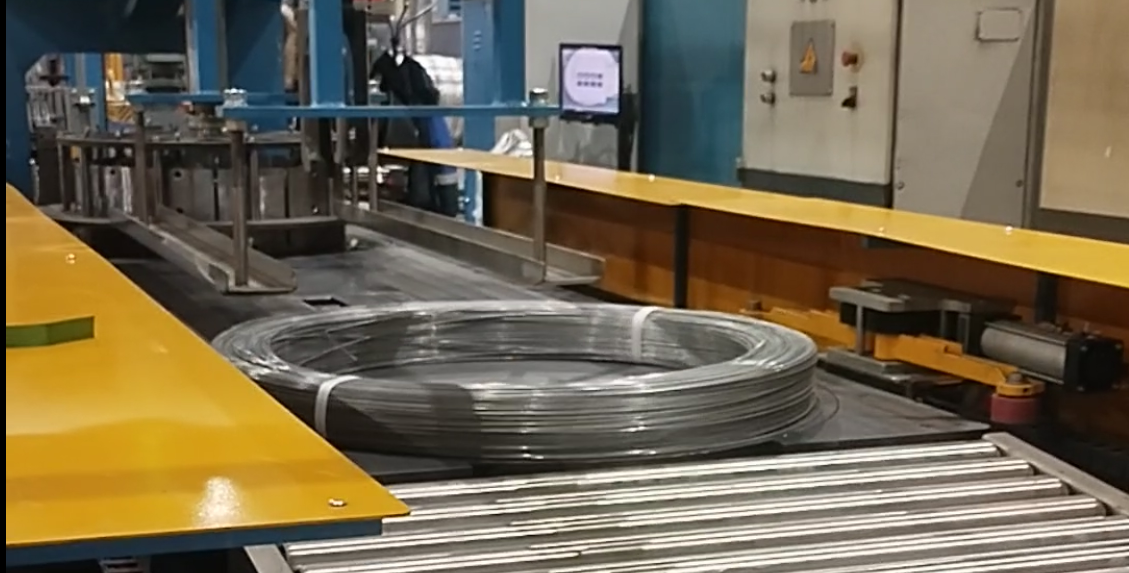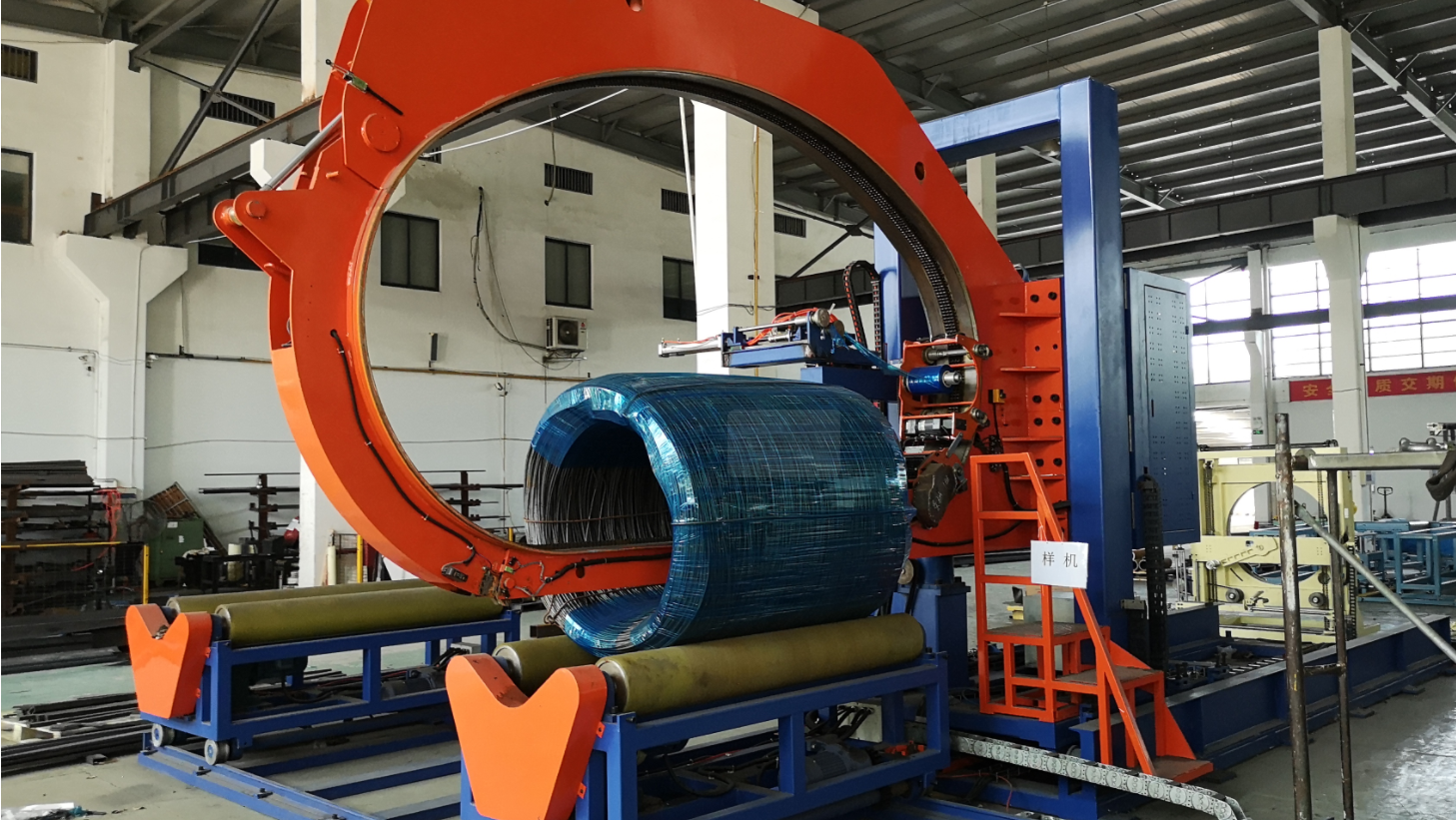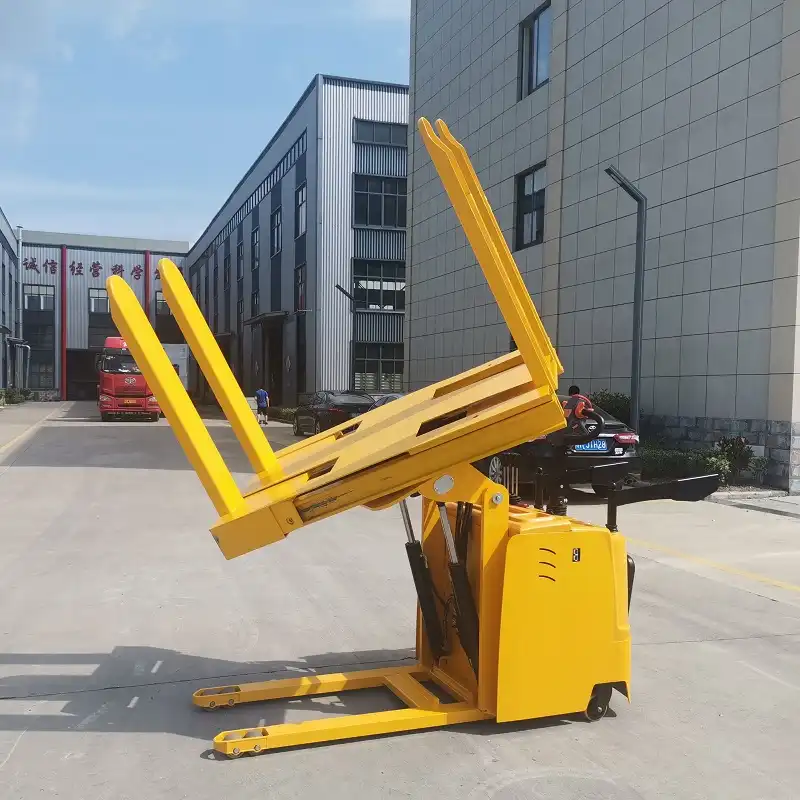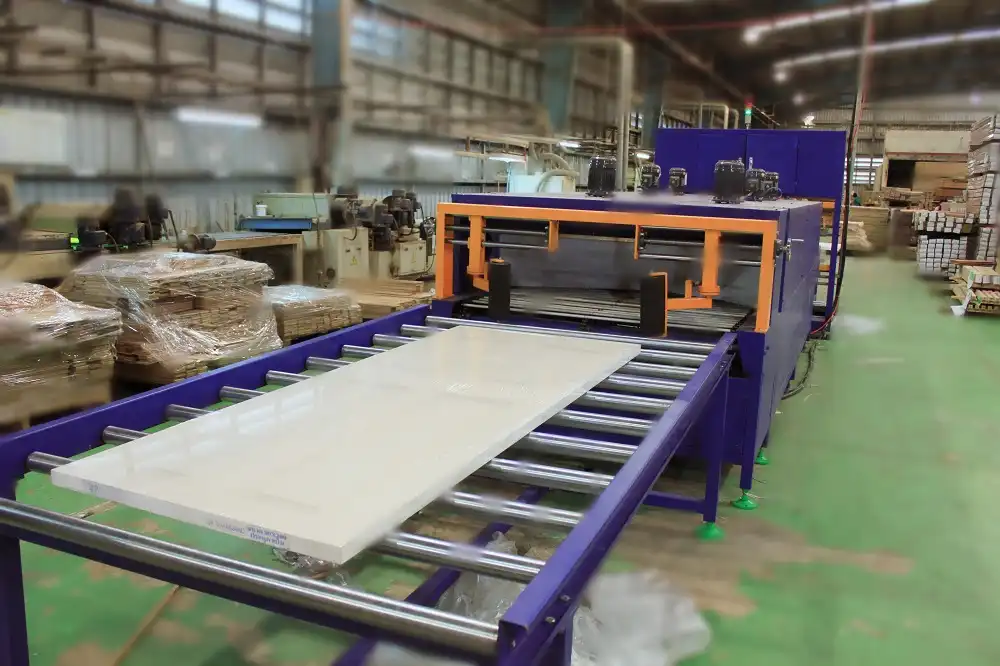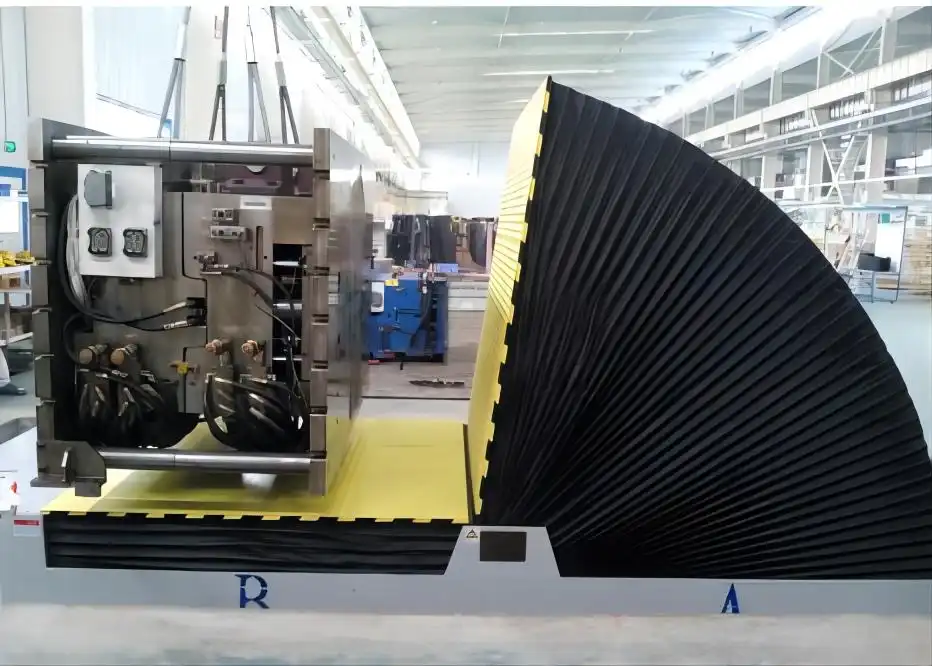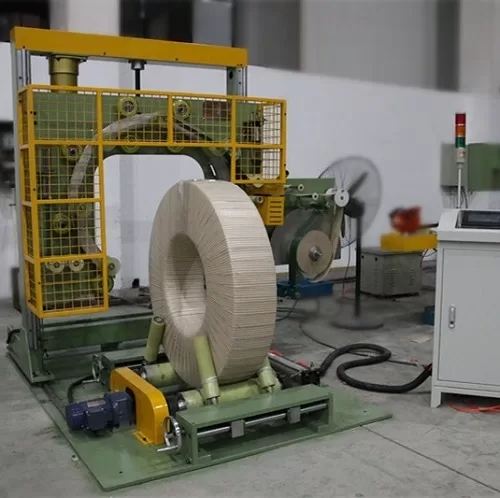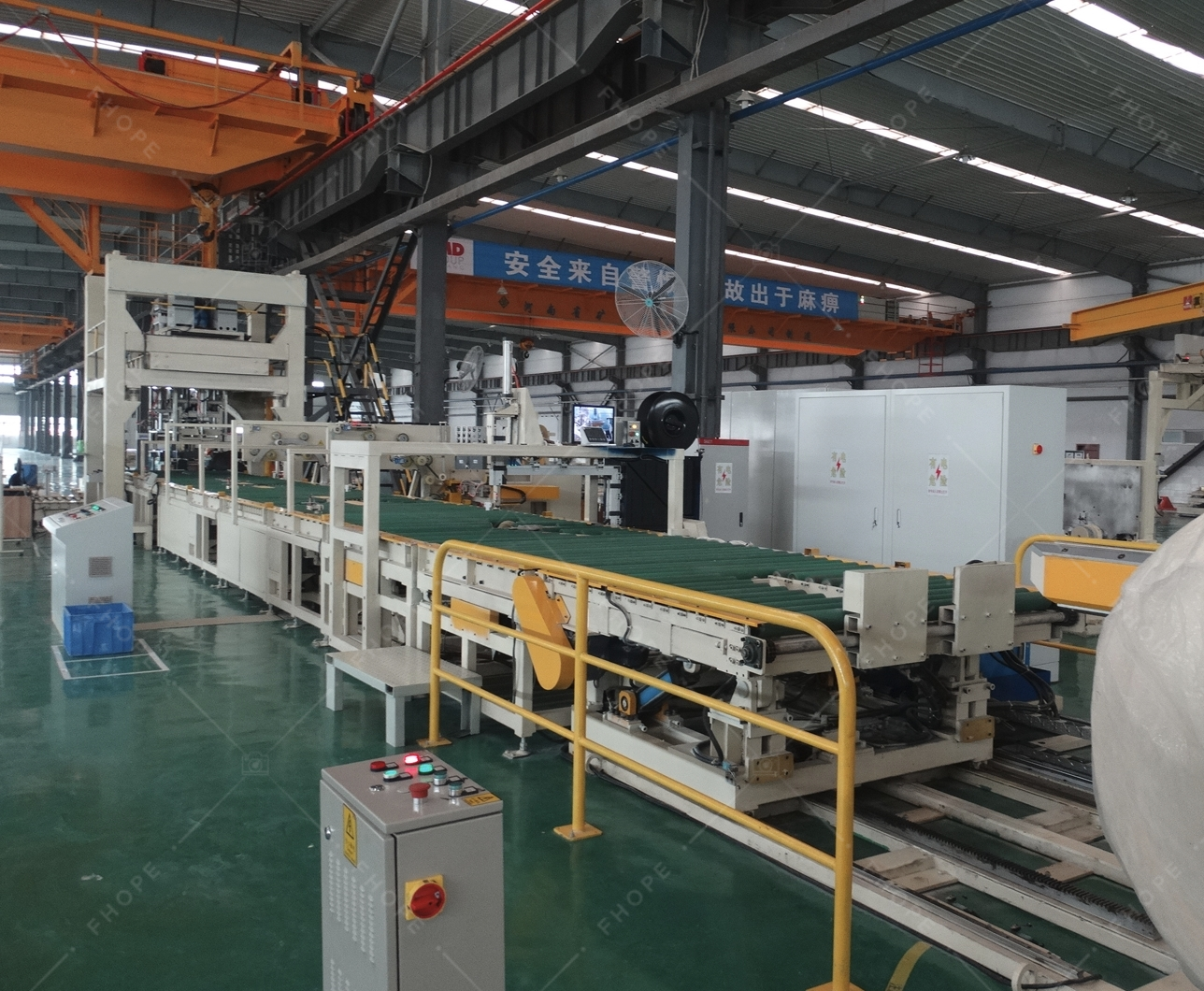Steel Coil Packing for International Shipping: Essential Considerations
Corrosion can devastate valuable steel coils during transit, especially across oceans. Improper packaging exposes your product to moisture, temperature swings, and contaminants, risking significant financial loss and damaging your reputation. Effective steel coil packing isn’t just a necessity; it’s a critical investment in ensuring quality and customer satisfaction upon arrival.
Steel coil packing for international shipping requires robust materials and strategic application to protect against corrosion and physical damage. Key considerations include selecting appropriate VCI (Vapor Corrosion Inhibitor) films and papers, ensuring adequate moisture barriers, accounting for temperature fluctuations, securing the coil properly, and implementing precise handling procedures from mill to destination.
Navigating the complexities of global logistics demands a proactive approach to protection. This article delves into the essential factors you must address to safeguard your steel coils, ensuring they maintain their mill-fresh quality throughout their international journey.
The Invisible Threat: Understanding Corrosion in Steel Coils
Steel coils, inherently susceptible to environmental degradation, face severe challenges during transport. Exposure to humidity, salt spray, and temperature variations, common in international shipping, creates a prime environment for rust formation. This electrochemical process compromises the material’s integrity, leading to surface damage, reduced value, and potential rejection by the end customer.
Corrosion in steel coils is primarily an electrochemical reaction between the metal, oxygen, and an electrolyte (often moisture). This process, accelerated by contaminants, temperature fluctuations, and high humidity, can lead to pitting, surface rust, and significant material degradation during transit and storage if not effectively prevented by protective packaging.

The Science of Steel Corrosion and Its Impact
Steel, an alloy primarily of iron and carbon, corrodes when iron atoms lose electrons (oxidation) and react with oxygen in the presence of water, forming iron oxides (rust). This is an electrochemical process involving anodic and cathodic areas on the metal surface connected by an electrolyte.
Humidity provides the necessary moisture layer on the steel surface. Even seemingly dry air can cause condensation as temperatures fluctuate, especially when steel coils cool after manufacturing or experience temperature swings during transit. Contaminants like salts and industrial pollutants act as electrolytes, facilitating electron flow and accelerating the corrosion rate. High temperatures also increase reaction rates.
Understanding this process is crucial for effective prevention. Barrier packaging prevents moisture and contaminants from reaching the surface. Vapor Corrosion Inhibitors (VCIs) introduce specific molecules into the enclosed package environment. These molecules volatilize and adsorb onto the metal surface, forming a thin, protective molecular layer. This layer disrupts the electrochemical cell necessary for corrosion by interfering with the movement of ions and electrons, essentially passivating the metal surface.
Different environmental conditions pose varying levels of threat. International shipping, particularly sea transit, is notorious for high humidity, salt-laden air, and significant temperature variations between climates and day/night cycles. Packaging must be designed to withstand these harsh conditions for extended periods.
Consider the following factors influencing corrosion risk:
| Factor | Impact on Corrosion Risk | Mitigation Strategy |
|---|---|---|
| High Humidity | Increased electrolyte availability | Moisture barrier films (VCI Poly), Desiccants, Sealed packaging |
| Temperature Fluctuations | Causes condensation | VCI protection active across temperature ranges, some insulating layers |
| Salt Spray (Sea Transit) | Highly corrosive electrolyte | Robust VCI formulations, impermeable outer layers |
| Industrial Pollutants | Act as electrolytes, accelerate process | Clean initial surface, effective VCI chemistry to neutralize airborne contaminants |
| Surface Contaminants | Create localized corrosion cells | Proper cleaning before packaging, VCI effectiveness around contaminants |
Selecting packaging materials capable of providing long-term protection under these dynamic conditions is paramount. VCI solutions are designed to combat these factors by creating a controlled microenvironment within the package, independent of the external atmosphere’s corrosivity.
Building the Shield: Essential Packing Materials
Selecting the right packaging materials is not merely about wrapping a coil; it’s about constructing a multi-layered defense against the myriad of threats encountered during international transit. Standard packaging might prevent some physical damage, but it offers little to no protection against the insidious creep of corrosion that can silently ruin a shipment. High-performance materials, particularly those incorporating VCI technology and robust moisture barriers, form the foundation of effective steel coil export protection.
Essential packing materials for steel coil international shipping combine physical strength with environmental protection. Key materials include Vapor Corrosion Inhibitor (VCI) papers and films that actively prevent rust, durable waterproof laminated papers for moisture barriers, and strong strapping and edge protectors to ensure structural integrity and prevent physical damage throughout the journey.
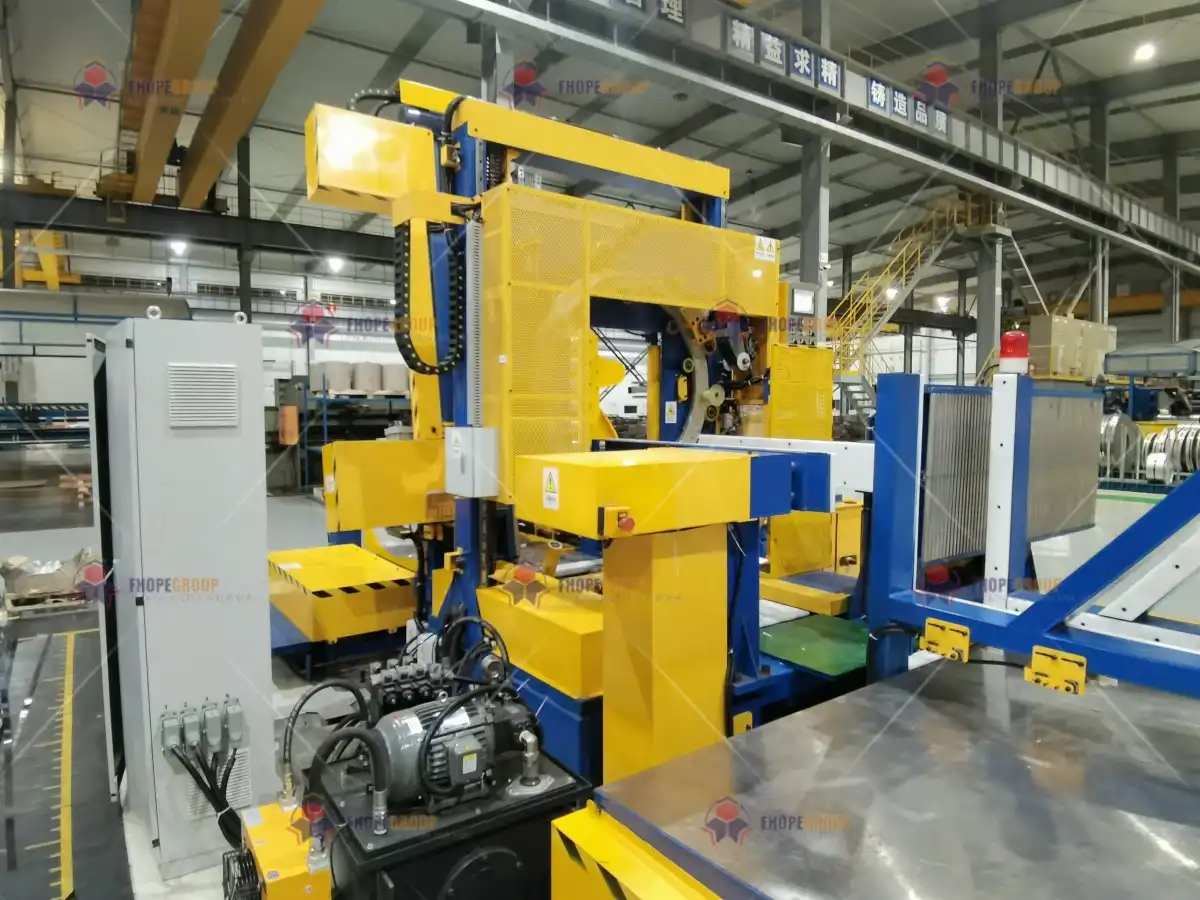
Layers of Defense: VCI, Barriers, and Reinforcement
Effective steel coil packaging utilizes a combination of materials, each serving a specific function in the protective system. This multi-layered approach ensures redundancy and addresses various potential failure points during handling, storage, and transit.
-
Vapor Corrosion Inhibitors (VCI): These are the cornerstone of corrosion prevention in enclosed packaging. VCI chemicals are typically impregnated into paper, film, or other carriers. They slowly volatilize within the package, creating a protective atmosphere that inhibits rust formation on metal surfaces, even in hard-to-reach areas.
- VCI Paper: Often used as an inner wrap, VCI paper provides direct contact protection and helps distribute VCI vapors. It can also absorb some initial moisture. Different formulations exist for ferrous, non-ferrous, and multi-metal protection. Wax-coated or poly-coated VCI papers add a layer of moisture resistance.
- VCI Film: VCI poly films are excellent moisture barriers and containment systems for VCI vapors. They can be used as bags, shrouds, or stretch wrap. The thickness and strength of the film are crucial for durability. Heat-sealable options provide an effective hermetic seal.
-
Moisture Barrier Materials: Preventing moisture ingress is critical. Even with VCI, continuous exposure to liquid water can overwhelm the protection.
- Waterproof Reinforced Laminated Papers: These are often used as outer wraps. Materials like poly weave reinforced kraft paper, scrim reinforced film laminations, or polyethylene coated paper provide significant moisture resistance and tear strength. They protect the inner VCI layer and maintain package integrity against environmental elements.
-
Reinforcement and Physical Protection: International shipping involves mechanical stresses, impacts, and vibrations.
- Edge Protectors: VCI-impregnated or standard edge protectors prevent damage and localized corrosion at the vulnerable edges of the coil.
- Strapping: High-strength steel or PET strapping secures the packaging layers, immobilizes the coil on the pallet, and prevents shifting.
- Pallets: Sturdy, export-grade pallets are essential for handling and stability. ISPM-15 compliance is often required for international shipments.
Choosing the right combination depends on factors such as the type of steel, storage duration, transit route (sea vs. land), and expected environmental conditions. A common high-level approach involves an inner layer of VCI material (paper or film), a robust outer moisture barrier wrap, and physical protection elements.
| Material Type | Primary Function | Application | Key Benefit |
|---|---|---|---|
| VCI Paper | Corrosion Inhibition, VCI Carrier | Inner wrap, interleaving | Active rust prevention, contact protection |
| VCI Poly Film | Corrosion Inhibition, Moisture Barrier | Bags, shrouds, stretch wrap, liners | Moisture barrier, VCI containment, transparency |
| Waterproof Laminated Paper | Moisture Barrier, Physical Barrier | Outer wrap, crate liner | Protects against rain, snow, physical abrasion |
| Edge Protectors | Physical Protection, Corrosion Barrier | Coil edges (outer and inner) | Prevents edge damage and localized corrosion |
| Steel/PET Strapping | Securing, Immobilization | Around coil circumference/eye, to pallet | Keeps package intact, prevents shifting |
| Desiccants (within VCI package) | Moisture Absorption | Inside VCI bag/shroud | Reduces humidity inside package, aids VCI function |
Integrating these materials effectively is key to achieving reliable protection. For instance, while VCI paper offers immediate VCI release, combining it with a VCI poly outer layer provides superior long-term moisture protection and ensures VCI concentration is maintained within the package, crucial for extended international journeys.
Mastering the Process: Packaging High-Temperature Coils
Packaging steel coils fresh off the mill line introduces a unique challenge: managing residual heat. While heat aids in initial drying, improper handling and packaging of high-temperature coils can lead to rapid cooling, condensation formation, and accelerated flash corrosion underneath the packaging. Therefore, timing and material selection are paramount when dealing with hot coils.
Proper packaging of high-temperature steel coils involves allowing them to cool to a safe handling temperature, ideally below 150°F (65°C), before applying heat-resistant VCI and barrier materials. This prevents condensation caused by temperature differentials and ensures the packaging remains effective, safeguarding the steel’s integrity during transit and storage.
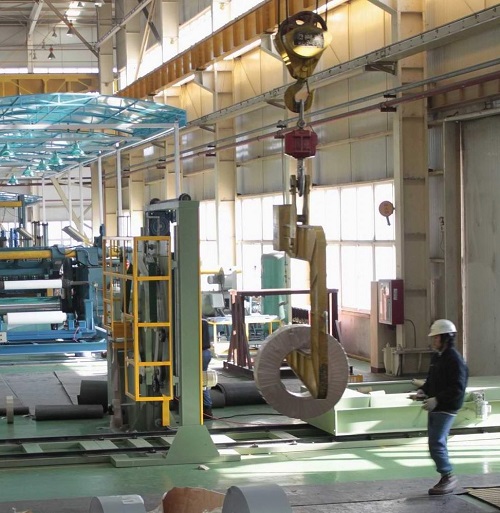
Timing and Technique: Applying Protection to Hot Coils
Applying packaging materials to steel coils that are too hot presents several risks: potential damage to the packaging material itself (especially plastics), premature release or degradation of VCI chemicals due to excessive heat, and, most critically, the acceleration of condensation as the enclosed hot coil cools within the package, trapping moisture against the steel surface.
The optimal strategy involves a balance: allowing sufficient cooling to minimize the risk of heat damage and excessive condensation, but packaging before significant heat loss leads to widespread moisture formation on the surface from ambient humidity. Natural cooling in a low-humidity environment is preferable to methods that introduce moisture.
Once the coil temperature is within the safe handling range for the chosen VCI materials (typically below 65°C or 150°F for standard industrial VCI products, although some specialized high-temperature VCI formulations exist), the packaging process should commence promptly. This minimizes the window for ambient moisture to condense on the still-warm surface before the protective layers are applied.
A systematic, step-by-step application process is vital:
- Cooling Phase: Allow coils to air cool. Monitor surface temperature, waiting until it reaches a suitable level for the chosen VCI packaging (e.g., below 65°C / 150°F). Avoid drastic cooling methods like water quenching.
- Surface Preparation: Ensure the coil surface is clean and free of contaminants if necessary (hot rolled coils often do not require cleaning unless heavily contaminated). Any cleaning must be followed by complete drying.
- Inner VCI Layer: Tightly wrap the coil with a VCI material, such as VCI paper or a VCI film wrap. Ensure generous overlap (several inches) at seams. For paper, secure overlaps with VCI tape. For film, use heat sealing or VCI tape for a tight seal. Pay close attention to the coil eye and edges.
- Outer Moisture Barrier: Apply a strong outer wrap, such as waterproof reinforced laminated paper or a thick VCI poly film shroud. This layer provides the primary barrier against external moisture. Ensure complete coverage and seal all seams meticulously using appropriate strong tape (packaging tape for paper, VCI tape or heat seal for film).
- Edge Protection: Affix VCI or standard edge protectors to the outer and inner diameters of the coil. Secure these in place with tape or strapping.
- Strapping: Apply steel or PET strapping around the circumference of the coil and, for horizontal coils, through the eye. Strapping should be tensioned adequately to compress the packaging layers and stabilize the coil without causing damage.
- Palletization: Place the wrapped and strapped coil on a sturdy pallet. Secure the coil to the pallet using additional strapping or banding, ensuring it cannot shift during transit. Follow ISPM-15 standards for export wood pallets.
- Desiccants (Optional but Recommended): For long transit times or very humid destinations, placing desiccants inside the VCI enclosure before sealing the outer layer can further reduce internal humidity.
- Labeling: Apply clear and durable labels indicating contents, weight, destination, origin, and any necessary handling instructions (e.g., "Handle with Coil Grab").
Adhering to this process, especially the cooling and immediate packaging steps, significantly reduces the risk of condensation and subsequent corrosion, ensuring the steel coils arrive in optimal condition.
Global Journeys: Ensuring Export Protection
Exporting steel coils subjects them to perhaps the most challenging environmental conditions they will face after manufacturing. Long transit times, exposure to marine atmospheres, varied climates, and multiple handling points all increase the risk of corrosion and damage. Effective export packaging isn’t just a luxury; it’s a fundamental requirement to protect investment and reputation on a global scale.
Export protection for steel coils necessitates packaging solutions designed to withstand harsh marine environments, significant temperature and humidity swings, and prolonged transit. Utilizing multi-layer VCI packaging combined with robust moisture barriers, heavy-duty reinforcement, and secure strapping is essential to ensure coils arrive at international destinations free from corrosion and damage.

Fortifying Shipments: Strategies for Overseas Transit
The rigors of international shipping demand a higher level of protection than domestic transport or short-term storage. Sea voyages, in particular, expose cargo to corrosive salt spray, high ambient humidity, and prolonged periods within enclosed containers where temperature fluctuations can easily lead to condensation.
Effective export packaging builds upon the foundational VCI and barrier layers with enhanced durability and security. The goal is to create a package that not only prevents corrosion but also withstands the physical stresses of loading, unloading, port handling, and movement on ships and trucks.
Key strategies for reinforcing steel coil shipments for export include:
- Selecting Long-Lasting VCI: Choose VCI formulations specifically designed for extended protection periods (e.g., 2-5 years or more), ensuring the VCI remains active throughout potentially long transit and storage times abroad.
- Maximum Moisture Barrier: Employ the most robust moisture barrier available, such as thick polyethylene films or highly reinforced laminated papers, meticulously sealed to prevent any water ingress. Overlap seams generously and use strong, waterproof tape or heat seals.
- Redundant Packaging Layers: Consider a multi-layer approach, such as wrapping in VCI paper, then bagging in VCI poly, and finally applying a tough outer waterproof wrap. This provides multiple lines of defense.
- Heavy-Duty Physical Protection: Use thicker gauge edge protectors, higher break strength strapping (steel or heavy-duty PET), and reinforced wrapping materials (like scrim-reinforced papers or woven poly).
- Secure Palletization: Ensure the coil is firmly secured to a substantial export-grade pallet. Methods include strapping through the coil eye (for horizontal coils) and banding over the top, anchoring the coil immovably to the base.
- Container Loading Best Practices: If shipping in containers, ensure coils are properly blocked and braced to prevent shifting during transit. Avoid loading corrosive materials or those emitting corrosive vapors in the same container as unprotected or inadequately protected steel.
- Desiccants: Always include an appropriate amount of desiccants inside the sealed VCI packaging for international shipments, especially to humid climates or when sea transit is involved. This helps control the internal humidity levels, enhancing VCI performance.
Consider the cumulative effects of the journey. A coil might spend weeks in port, then weeks at sea, followed by inland transport in the destination country. Each stage presents unique challenges. Packaging designed for export must anticipate and protect against the sum of these conditions.
| Export Stage | Primary Risk | Packaging Countermeasure | Material Example |
|---|---|---|---|
| Port Storage | Humidity, Rain, Handling | Waterproof Outer Wrap, Secure Strapping | Reinforced Laminated Paper, Heavy-Duty Strapping |
| Sea Transit | High Humidity, Salt Spray | Sealed VCI Poly Bag/Shroud, Desiccants | Thick VCI Film, VCI Heat Seal Tape, Silica Gel Desiccants |
| Container Transport | Temp/Humidity Swings, Shift | Multi-layer VCI, Secure Palletization, Blocking & Bracing | VCI Paper + VCI Poly, Export Pallets, Strapping |
| Destination Inland | Varied Climate, Handling | Durable Outer Layer, Continued VCI Protection | Waterproof Reinforced Wrap, Long-Lasting VCI Formulation |
Investing in premium export packaging significantly reduces the likelihood of rust-related claims and rework, protecting both the supplier’s and receiver’s bottom line.
Packaging Automation and Efficiency
While the focus is often on the materials themselves, the process of applying packaging, especially for large, heavy steel coils, is crucial for both effectiveness and operational efficiency. Manual packaging can be labor-intensive, inconsistent, and potentially hazardous. Automation streamlines this process, ensuring consistent application of materials, reducing labor costs, and enhancing safety.
Automated steel coil packaging systems apply materials like VCI films, stretch wrap, and banding consistently and efficiently, reducing manual labor and improving package uniformity and reliability. These systems, ranging from semi-automatic wrappers to fully integrated lines, enhance throughput and ensure critical protective layers are applied correctly, minimizing the risk of damage and corrosion during transit.
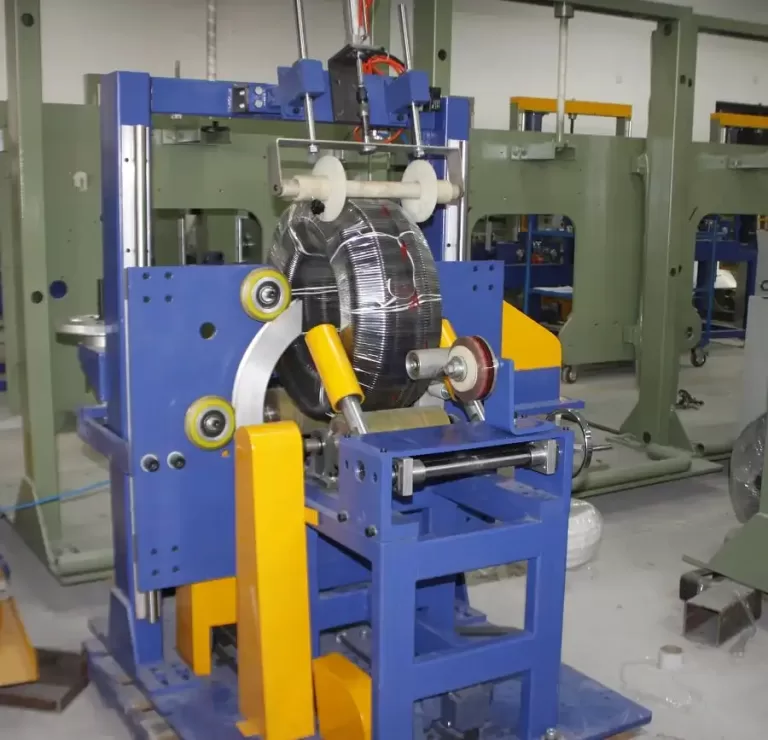
Modern coil packaging lines incorporate various levels of automation to handle the demanding task of wrapping and securing heavy steel coils. These systems are designed to apply protective layers like VCI stretch film, waterproof paper or film wraps, and strapping with repeatable precision, a significant advantage over manual methods which can lead to gaps, inconsistent tension, or inadequate coverage. Automation ensures that overlaps are consistent, seals are secure, and strapping is applied with the correct tension, all critical factors for effective protection against corrosion and physical damage during international shipping. The speed of automated systems also allows for faster throughput, reducing the time coils spend exposed before being fully protected.
Considerations for Automated Packaging:
- Type of System: Options range from simple stretch wrappers to complex orbital wrapping machines that apply protective layers around the circumference of the coil while it’s on a pallet or conveyor. Fully integrated lines can include automatic strapping, weighing, and labeling.
- Material Compatibility: Ensure the automated system is compatible with the chosen VCI films, stretch wrap, and outer barrier materials in terms of roll size, film gauge, and tension control capabilities.
- Coil Size and Weight: Systems must be designed to handle the specific dimensions and weights of the steel coils being produced.
- Throughput Requirements: Automation speed can vary significantly, impacting how many coils per hour can be packaged.
- Level of Automation: Decide whether semi-automatic assistance (operator guides material) or fully automatic operation (system handles material application and cutting) is required based on volume and labor availability.
Investing in automation can lead to significant long-term savings through reduced labor costs, decreased material waste, improved package quality, and most importantly, a reduction in costly rust-related claims from customers. While initial investment is higher, the benefits in consistency, speed, and reliability are substantial for manufacturers frequently shipping steel coils internationally.
| Packaging Method | Consistency | Speed | Labor Intensity | Package Quality | Suitability for Heavy Coils |
|---|---|---|---|---|---|
| Manual Wrapping | Variable | Slow | High | Variable | Difficult, Risky |
| Semi-Auto Wrapper | Good | Medium | Medium | Good | Moderate |
| Fully Auto Wrapper | Excellent | High | Low | Excellent | Excellent |
| Integrated Auto Line | Excellent | Very High | Very Low | Excellent | Excellent |
Automated systems provide a reliable and efficient means to apply the complex layers of protection necessary for steel coil export, ensuring that the investment in quality materials translates into reliably protected products reaching their global destinations.
Conclusion
Effective steel coil packing for international shipping is a critical operational requirement, directly impacting product quality, customer satisfaction, and profitability. Understanding the science of corrosion, selecting appropriate multi-layered packaging materials like VCI films and waterproof barriers, implementing meticulous handling and application processes, especially for high-temperature coils, and potentially leveraging automation are all essential considerations. By prioritizing robust packaging, manufacturers and distributors ensure their valuable steel coils arrive at any global destination in pristine, mill-fresh condition, preserving both the product’s value and their reputation. Investing in high-quality packaging is an investment in successful international trade of steel products. Consider implementing advanced systems like a coil packing line to standardize and optimize your protective measures.

